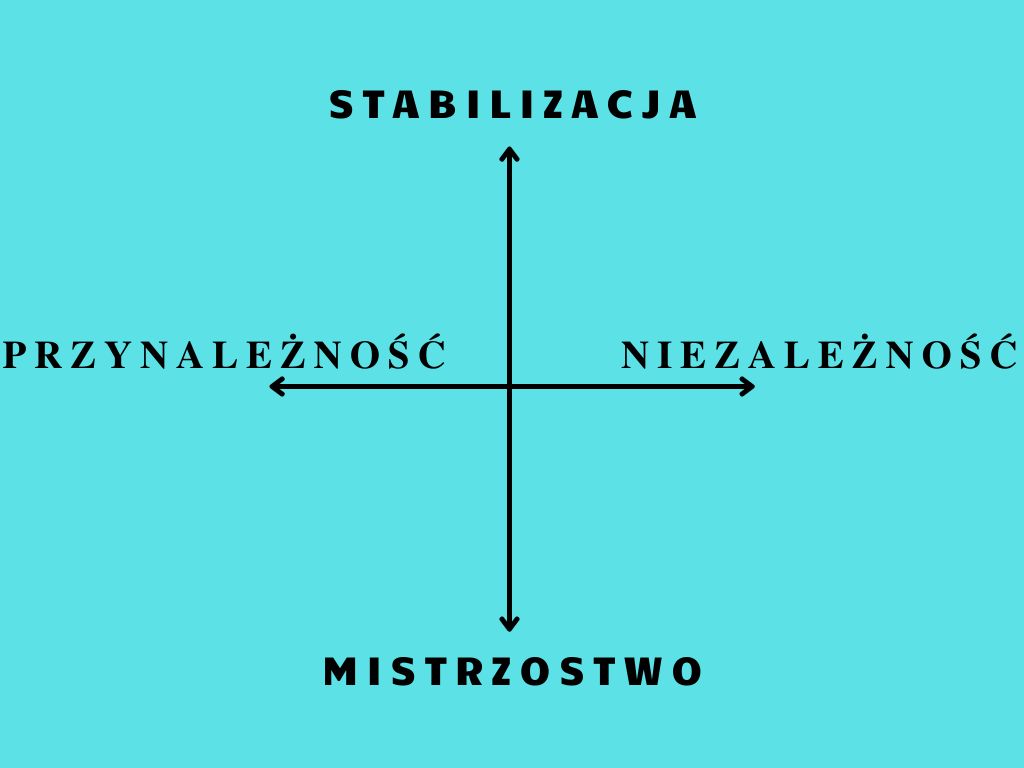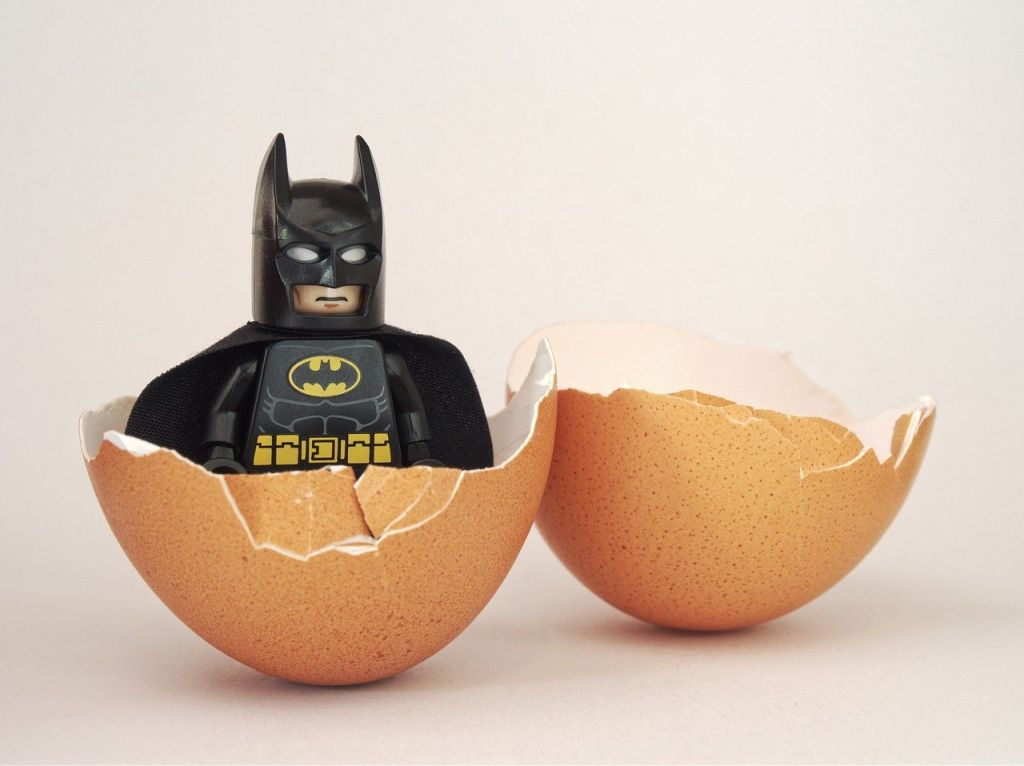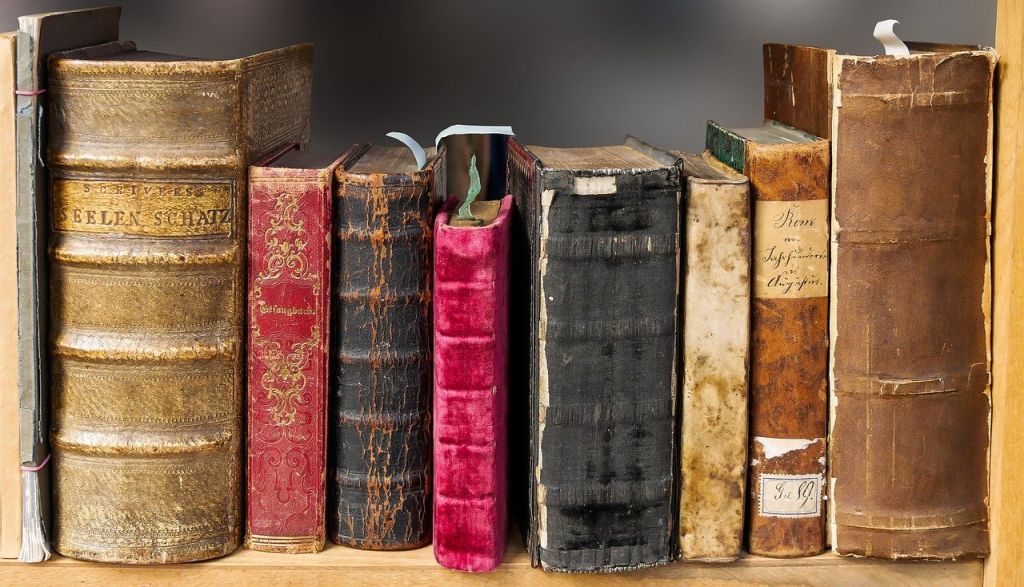What do archetypes have to do with a brand? Fictional characters known to us from books or movies are created according to broadly understood paradigms that help people understand their actions. Brand archetypes work similarly. It is nothing more than a way of presenting the brand - its symbolism, values, behavior, messages - as a persona. Thanks to this, it is closer to the target audience. How do brand archetypes "break into" the minds of recipients with familiar symbols and meanings? About it below.
- What are brand archetypes?
- Brand archetypes in the STABILIZATION category
- Brand archetypes in the area of AFFILIATION
- Brand archetypes in the CHAMPIONSHIP area
- Brand archetypes in the area of INDEPENDENCE
- Brand archetypes - examples
- How to use brand archetypes in marketing?
- Proces identyfikacji archetypu dla marki
- Rola archetypów w budowaniu lojalności klientów
Pomyśl o swoich ulubionych postaciach z książek czy filmów. Czy zauważyłeś kiedyś, że można ich pogrupować w określone kategorie bohaterów? Znużony światem detektyw zapijający problemy egzystencjalne tanim trunkiem. Femme fatale, zaliczająca spektakularne wzloty i upadki. Naiwny młodzieniec, którego przeznaczeniem jest zmiana świata. To właśnie archetypy. Postacie zdefiniowane przez ogólne cechy, które wyjaśniają, za czym się opowiadają a także pokazują, co motywuje ich działania. Co istotne archetypy istnieją nie tylko w opowieściach i na ekranach tv. Można je znaleźć wszędzie – włączając świat marek.
How to use brand archetypes in marketing?
Check what we recommend for your company.
What are brand archetypes?
Archetypy marek nadają im „charakteru”, który sprawia, że odbiorcy wyznający te same wartości mogą się do nich łatwiej odnieść. Wszystkie marki należą do firm, z którymi mamy relacje transakcyjne – dają nam coś, w zamian za nasze pieniądze. Jednak tylko w przypadku niektórych marek czujemy więź, lojalność, a w odniesieniu do innych wręcz… miłość. Jak to się dzieje? Najbardziej lubiane marki łączą się ze swoimi odbiorcami na głębszym poziomie niż większość marek. Te, które mają autentyczny przekaz i jasno określone wartości, często podbijają ich serca. Może sam jesteś przywiązany do swojego Macbooka, uwielbiasz swoje Air Maxy lub nie wyobrażasz sobie innego smaku fasolki niż ta od Heinz. Prawie wszystkie marki, z którymi czujemy taką więź, są zbudowane z solidnym dostosowaniem do archetypu. Ten z kolei jest zakorzeniony w dziesięcioleciach badań psychologicznych i ma swoje źródło w mitologii greckiej.
W obszarze zarządzania marką wyróżnia się cztery główne motywatory – siły, które sprawiają, że konsumenci decydują się na zakup produktów właśnie tych, a nie innych marek. Obrazowo można je przedstawić na dwóch osiach. Na jednym końcu osi pionowej mamy stabilizację, zaś po jej przeciwnej stronie – mistrzostwo. Z kolei na osi poziomej po jednej stronie znajduje się przynależność, a po drugiej niezależność. Dla każdego z tych obszarów wyróżnia się po trzy brand archetypes dla każdej motywacji uwzględnionej na osi. Każdy z nich może stanowić nieocenione sales support.

Overview of 12 brand archetypes
Brand archetypes in the STABILIZATION category
Down archetypów marek, które dążą do stabilizacji i kontroli, należą Twórca, Opiekun i Władca.
Creator (the Creator) is visionary, nonconformist and authentic. He wants to create something meaningful and unique. These are brands that love to implement new ideas. They derive deep satisfaction from both the process and the result of creating something that did not exist before. Creator customers avoid advertising, but are able to appreciate experimental or novel advertising. Successful brand-makers are gaining devoted and very loyal fans such as Apple. They promise their clients authenticity, guided mainly by the desire to create unique and lasting works and inventions. What is average is what they fear the most.
Guardian (the Caregiver) kieruje się potrzebą chronienia innych osób i opieki nad nimi. To marki, które zapewniają ochronę, bezpieczeństwo, ale też wsparcie dla swoich klientów. Najgorsze, co mogłoby im się przydarzyć, to postrzeganie ich produktów jako szkodliwych lub z którymi wiąże się jakikolwiek wyzysk. Zazwyczaj brand archetypes Opiekun oferują produkty wspierające rodziny lub służące sektorom publicznym, na przykład służbie zdrowia i edukacji. Mają na celu skłonienie ludzi do dbania o siebie. Niemal wszystkie marki produktów do pielęgnacji niemowląt opierają się na tym archetypie, który nieprzypadkowo funkcjonuje również pod inną nazwą – Matka.
Lord (the Ruler) - Since the main attributes of the Ruler are leadership and responsibility, brands based on this archetype gain the trust and loyalty of consumers. Brands in the Ruler archetype are known to speak authoritatively. They also often spread the belief that they are leaders in their field. As responsible leaders, they have the goal of helping others succeed. By tidying up where there is chaos, they use power to achieve positive results. However, they must be careful not to dominate others or become too hierarchical.

Brand archetypes in the area of AFFILIATION
Błazen, Zwyczajny człowiek oraz Kochanek – oto brand archetypes, które dążą do przynależności idącej w parze z przyjemnością.
Clown (the Jester) nie dąży do rozwiązania problemu, ponieważ jego głównym celem podróży jest sama podróż. Wynik rzadko ma znaczenie dla Błazna. On nie wspomina ani nie planuje przyszłości. Ma zdolność myślenia nieszablonowego, co prowadzi do innowacyjnych pomysłów. Oznacza to, że brand archetypes w typie Błazna są mistrzami w burzy mózgów, przeformułowaniu koncepcji i przedstawianiu nowych perspektyw ludziom i innym archetypom marki. Błazen obiecuje rozrywkę. Klienci tego typu marek uważają „tradycyjne” reklamy za nudne, przy czym uwielbiają wszystko, co niezwykłe, dziwne i zabawne. Marketing marek-Błaznów może być niekonwencjonalny. Pomyśl chociażby o reklamie Skittles, żyrafie i tęczy.
Brands in the archetype An ordinary man (the Regular Guy) strive to be on the same level as consumers. They treat them as equals, expressing the qualities of unpretentiousness and humility. Recipients appreciate the quality and reliability of their brand. They prefer what is known and will therefore invest in brands they trust. Companies in the Ordinary Man archetype are proud of their own down-to-earth ethos. They give people a sense of belonging with a high degree of practicality and functionality, and brand image it is honest, trustworthy and as solid as any Volkswagen model.
Lover (the Lover) – tym mianem nazywamy marki, które skupiają się na tworzeniu relacji i wywoływaniu emocji. Archetypy marki Kochanek chcą, aby ludzie czuli się wyjątkowo. I zaspokajają u swoich odbiorców tę potrzebę. Postrzegają świat przez pryzmat miłości. Marki Kochanków lubią celebrować fizyczną radość bycia człowiekiem, pielęgnując intymność i poczucie błogości u swoich konsumentów, którymi są osoby ceniące estetyczny wygląd towarów i usług. Zwykle przyciągają ich marki premium. Te, które obiecują pasję, jak np. Victoria’s Secret, marka promująca siebie jako czarującą, z naciskiem na zmysłowe przyjemności. Jaki jest Kochanek jako marka? Jest namiętny i reprezentuje wszystko, co cieszy zmysły – jak np. piękne rzeczy, pyszne potrawy, kuszące zapachy.
Brand archetypes in the CHAMPIONSHIP area
Do tej kategorii należą brand archetypes Bohater, Buntownik oraz Czarodziej. Tym co je łączy, jest dążenie do mistrzostwa, któremu towarzyszy ryzyko.
Character (the Hero) – his main motivation is to prove his worth, and his greatest fear is to fail and show weakness. Whether on the battlefield, on the football field or on the political scene, the Hero is determined to leave a mark of his presence in the world. Brand archetypes in the Hero type promote themselves as of good quality and better than their competitors. As a result, the marketing of the Hero brands often uses strong images and strong colors to convey this. The hero represents brand archetypes that strive to achieve their goals by doing their best.

The hero can often be mistaken for the Ruler, as they both display several similar traits: primarily strength and self-confidence. The hero, however, is above all brave. His actions are less controlled. Hero type brands - such as BMW for example - promise quality. This is what their clients care about. They like to think that their consumer choices will allow them to "stay ahead" of other consumers.
Rebel (the Outlaw) brand archetypes w stylu Buntownika to eksperci w tworzeniu naprawdę radykalnych pomysłów, usług i produktów. Poprzez zorientowane na działanie, odkrywanie nowych perspektyw, proponowanie nowego spojrzenia i inspirowanie do zmiany, mogą być postrzegane jako rewolucyjne. Marki-Buntownicy stanowią alternatywę dla głównego nurtu, ponieważ starają się wyróżnić i zdecydowanie odrzucają status quo. Przyciągają ludzi, którym znudziły się tradycyjne wybory. Ich odbiorcy prawdopodobnie docenią szokujące treści lub reklamy, które są niepowtarzalne lub nie mają oczywistego „punktu sprzedaży”.
Wizard (the Magican) this is how brand archetypes position themselves, which function as a catalyst for change, and strive to turn the world's problems into opportunities. Brands in the Wizard archetype strengthen the position of their customers and intend to provide solutions that are beneficial to all involved in the situation. "Magic" businesses - such as Xbox - thrive on innovation. Companies in this group see opportunities and, through their ingenuity, cause a chain reaction. Wizards promise knowledge. Their customers need to feel that they can become smarter with a given product or service.

Brand archetypes in the area of INDEPENDENCE
Niewinny, Odkrywca oraz Mędrzec – oto trzy brand archetypes dążące do niezależności i spełnienia.
Innocent (the Innocent) - this is how they position themselves in the minds of brand customers who just want to be free, happy and enjoy a simple life. They are often brands that can ignore and overcome barriers that held others back. They succeed because they are driven by optimism and hope. The world of Innocent Brands is simple, in a positive sense. It's a place where life can be uncomplicated. Where it is possible to have fun. This archetype is used, for example, by Coca-Cola. Following the accepted convention of this archetype, the brand's tone is simple but joyful and radiates optimism. "Innocent" brands use concise language and simple and natural images to convey their messages to their audience.
Discoverer (The Explorer) tworzy produkty, które promują indywidualność, ekscytację i sposób na doświadczanie nowych rzeczy. Klienci Odkrywcy stawiają na marki, które stawiają na wolność i eksplorowanie – zwłaszcza te, które pozwalają klientowi wyruszyć z nimi w tę podróż. Reklamy Odkrywcy zwykle dotyczą przyrody i podejmowania ryzyka. Archetypy marki Odkrywcy mają na celu sprawienie, by ludzie poczuli się wolni. To marki, które pomagają ludziom, tak by mogli wyrazić swoją indywidualność. Są innowacyjne i ambitne. Poszukują nowych doznań, przekraczają granice i cieszą się nieoczekiwanymi odkryciami, jednocześnie przyjmując filozofię „bez ograniczeń”. Odkrywca to naturalny wybór osobowości marki w przypadku wytrzymałych produktów, używanych „w terenie”, takich jak np. samochody Jeep.
Sage (The Sage), guided by the search for truth, is best fulfilled by finding answers to the most difficult questions. Google - demonstrating intelligence, knowledge and the ability to solve problems, is arguably the most important sage of our time. Sage's clients believe that knowledge comes from growth, and therefore they are constantly looking for new sources of information. They are attracted by ads that encourage them to think in a completely different or new way. The primary motivation of the Sage is to use intelligence and analysis to understand the world. It is based on the claim that this truth will set us free.
Brand archetypes - examples
Prawie połowa (48%) najpopularniejszych marek w 2020 roku należy do kategorii żywność i napoje lub marki do użytku domowego i osobistego. Jednak nie tylko firmy oferujące fizyczne produkty wykorzystują brand archetypes w swoich działaniach marketingowych. Ciekawym przykładem takich działań jest zdefiniowanie archetypów miasta. W przypadku Krakowa, w „Programie Strategicznym Promocji Krakowa na lata 2016-2022” zdefiniowano trzy archetypy, do których może odwoływać się miasto w komunikacji z grupami docelowymi.
It was found that the archetype of the Sage and the Creator dominate the image of Krakow. The first is a derivative of the city's historical and cultural heritage, its intellectual resources and university traditions. On the other hand, the archetype of the Creator refers to the magnetism of the city of Krakow, which attracts artists and gives them space to e.g. free action in the area of self-realization. It was found that the image of Krakow needs to be dynamized and enriched with an element related to challenges. That is why the archetype of the Discoverer was included in the city's promotion concept. His activity in search of development is to revive the image of a mature and peaceful Sage.
How to use brand archetypes in marketing?
Budowanie marki NIE jest marketingiem. Jest fundamentem. Na nim opiera się cała Twoja firma, więc właściwa strategia marki ma kluczowe znaczenie dla Twojego sukcesu. Szczególnie w odniesieniu do skutecznego wykorzystania archetypów marki. Jeśli chcesz, aby Twoja marka wyróżniała się, chcesz zwiększyć jej widoczność, wiarygodność, sympatię i zdobywać wciąż nowe referencje, musisz zintegrować archetypowy branding ze strategią budowania marki. Archetypy marki mają niezwykłą mocy zmiany strategii firmy z push na pull. Zamiast „wykrzykiwać” swoje wiadomości w nadziei na przyciągnięcie nowych klientów, masz możliwość angażowania swoich głównych docelowych klientów poprzez wywoływanie obrazów i skojarzeń w ich nieświadomości. Taka communication strategy naturally attracts them to your brand. Brand archetypes also help build relationships with customers as opposed to simply generating one-off occasional transactions. This, in turn, influences the perception of your brand and strengthens customer loyalty.
Chociaż nie zdajemy sobie z tego sprawy, archetypy zawierają pierwotne znaczenie, które czasami jest trudne do wyartykułowania, ale łatwo zrozumiałe i intuicyjnie przyjęte przez nasz umysł. Ta tajemnicza cecha archetypów, a także różnice kulturowe, niesie ze sobą pewne niebezpieczeństwa dla specjalistów od brandingu. Trzeba więc zachować ostrożność. Archetypy marki nie powinny być jedynym czynnikiem, który kieruje staraniami o budowanie marki. Można je bardzo skutecznie wykorzystać do zbudowania zwycięskiej marki o silnym wpływie emocjonalnym, ale tylko w połączeniu z innymi elementami. Z silną strategią marki, dokładnymi badaniami odbiorców (target group), a deep understanding of the market and its cultural nuances. It is also worth considering marketing audit. Dopiero mając tę wiedzę można zająć się konstruowaniem strategii komunikacji w oparciu o archetypy marki.
Proces identyfikacji archetypu dla marki
Aby skutecznie zdefiniować archetyp marki, należy przeprowadzić dogłębną analizę tożsamości firmy oraz wartości, które chce przekazać swoim odbiorcom. Pierwszym krokiem jest zrozumienie, czym są archetypy i jak wpływają na postrzeganie marki przez klientów. Następnie warto skorzystać z usług agencji brandingowej, która pomoże w precyzyjnym określeniu odpowiedniego archetypu. Kluczowe jest również zbadanie preferencji i oczekiwań grupy docelowej, co pozwoli na dopasowanie archetypu do potrzeb rynku.
Rola archetypów w budowaniu lojalności klientów
Wykorzystanie odpowiednich archetypów marki odgrywa kluczową rolę w kształtowaniu trwałych relacji z klientami. Dzięki spójnemu przekazowi, opartego na wybranych archetypach w marketingu, marka staje się bardziej autentyczna i wiarygodna w oczach odbiorców. To z kolei prowadzi do zwiększenia lojalności klientów, którzy identyfikują się z wartościami reprezentowanymi przez firmę. Zrozumienie, czym jest archetyp, pozwala na tworzenie komunikatów marketingowych, które rezonują z emocjami i potrzebami konsumentów.

